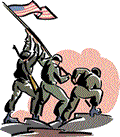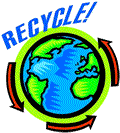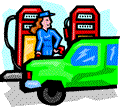
In this lesson about the EPA, students will find out that their government pays for goods and services by taxing people and companies.
Introduction
 Who is the U.S. government? It is US! https://guides.loc.gov/constitution are not just words that start the Preamble, they describe who our government is! What our government does and who pays for it are part of this lesson.
Who is the U.S. government? It is US! https://guides.loc.gov/constitution are not just words that start the Preamble, they describe who our government is! What our government does and who pays for it are part of this lesson.
Learning Objectives
- Identify taxes as a source of revenue used by our government to provide services.
- Identify a public good.
Resource List
-
Primary Documents in American History: Take a closer look at the constitution. This site provides information on the constitution as well as other important documents in American History.
https://guides.loc.gov/constitution
-
Amosweb: An online economics glossary with over 2000 economic terms and definitions.
www.amosweb.com/cgi-bin/awb_nav.pl
-
Preamble: Students can read the Preamble of the U.S. Constitution at this site.
https://constitution.findlaw.com/preamble.html
-
Alphabet: This site explains what the EPA does using each letter of the alphabet.
www.epa.gov/superfund/kids/alphabet/a.htm
-
"A Kids Adventure Story": This is a comic book story about how the Superfund Program operates.
www.epa.gov/superfund/kids/story/page-0.htm
-
"Introduction to Superfund": This page from the introduction of the Superfund Program explains who pays for the program.
www.epa.gov/superfund/kids/intro/index4.htm
-
Environmental Kids Club: This page provides more information on the EPA and what it does in a way that students can easily understand.
https://www.epa.gov/students
-
Public Goods and Private Goods:Have your students check their understanding of Public Goods and Private Goods by completing the following interactive activity.
Interactive Activity
Process
The key to this lesson is the concept of externality. Take a moment and explore the definition online by typing in "externalities" at Amosweb (an online economics glossary) . Some thoughts to consider as you present this lesson to your students:
- Smoking is always given as an example of a negative externality–second hand smoke kills people.
-
Education is a positive externality–society is better off when all are educated and the benefits accrue to more than just those who go to school.
The issue with 'public goods' in this lesson is that its tough to price the benefits (or costs) associated with these externalities and so firms who are price givers often under- or over-value the good relative to these externalities. Firms pollute because they don't realize the cost of that pollution as production costs. Thus it's a market failure and government should step in.
Have your students read the https://constitution.findlaw.com/preamble.html , it is promised that our government will take care of the people (promote the general welfare) and protect them. That is sure good to know! But how does the government do that? And who pays for it?
Have your students read and then discuss in small groups the following information.
If the government is US then WE pay for it! We pay for our government agencies by paying taxes. The taxes include the personal income tax, taxes that come out of our paychecks called payroll taxes, sales taxes, and others.
 Where do all those tax dollars go? Our government uses them to pay for all the buildings, people, and policies that the government operates. Plus, tax dollars go to pay for social security payments, salaries for all the people in the Army, Navy, Air Force, and Marines AND all their machinery and weapons, medical expenses, and many other goods and services. Sometimes we even have some tax dollars left over to pay down the national debt!
Where do all those tax dollars go? Our government uses them to pay for all the buildings, people, and policies that the government operates. Plus, tax dollars go to pay for social security payments, salaries for all the people in the Army, Navy, Air Force, and Marines AND all their machinery and weapons, medical expenses, and many other goods and services. Sometimes we even have some tax dollars left over to pay down the national debt!
Through our government, we, the people, decide on rules to clean our land. When some individuals harm the land, water or air, the goverment may require them to change their actions. Sometimes government uses taxes as a way to increase the private cost of using resources.
Our government tries to protect us from all sorts of problems. Some of the problems are very serious! A long time ago factories used to dump chemicals into our water, or burn them and let them go into the air. Animals and people started getting very sick. So our government set up the Environmental Protection Agency (EPA).
The EPA's job is to make sure that our air, water, and Earth itself are all environmentally safe. Go to the EPA kids website and go through the alphabet to get an overview of what the EPA does.
We usually pay for things that we want or use. For example, we pay for our food and we pay for our electricity in our homes, but how could we pay for clean air? To whom would we write the check? It is a good thing that no one charges us for clean air! How would that work? Could everyone who breathes pay? How about the people who couldn't pay or people from other countries – would they have to hold their breath?
Since a private company wouldn't be able to charge everyone who uses the air, our government provides an agency to take care of it!
Our tax dollars pay for the people who work at the EPA, the buildings and equipment used by the EPA, the tests that the EPA performs on the air, water, and Earth, and almost all of their expenses. We pay for all of this because the benefit of clean air, water, and Earth is worth more than the cost of the EPA's activities.
Sometimes our government tries to pass the cost of cleanup over to the company that caused the pollution, or to the entire industry that caused the pollution a long time ago. Read about one of these programs on the Introduction to Superfund website.
Have your students read this story about Superfund .
Have your students see if they can find out who pays for Superfund by reading this page on the
Introduction to Superfund website.
 Have your students read the following and then discuss in small groups what they have learned from the reading. Yes, sometimes the EPA can make the companies that cause the pollution pay for the cleanup. Sometimes chemical and gasoline companies pay an extra tax to help the EPA pay for the cleanup. Sometimes our tax dollars go to pay for the cleanup.
Have your students read the following and then discuss in small groups what they have learned from the reading. Yes, sometimes the EPA can make the companies that cause the pollution pay for the cleanup. Sometimes chemical and gasoline companies pay an extra tax to help the EPA pay for the cleanup. Sometimes our tax dollars go to pay for the cleanup.
Since private companies cannot charge for the clean environment, then our government provides the environmental protection service. We call that a public good. Roads, bridges, public schools, police protection, parks, and armed forces are all public goods.
[NOTE: Remind your students that services for the public are still called public goods, even though they are services.]
For a definition on externalities visit, Amosweb an online economics glossary.
(To fully understand this, the students will need to know about externalities. Tell the students that one example is smoking. Smoking is considered a negative externality because second hand smoke kills people. Education, on the other hand, is a positive externality. Society is better off when all are educated and the benefits accrue to more than just those who go to school. The issue with public goods is that its tough to price the benefits (or costs) associated with these externalities and so firms who are price givers often under-or-over-value the good relative to these externalities. Firms pollute because they don't realize the cost of that pollution as production costs. Thus, it's a market failure and government should step in.)
The government can solve this environmental problem, as you have seen. Now let's see if you can solve this one (you may have to revisit the sites to get some help).
Should special taxes be placed on gum? Have your students answer the following questions and then have them print out their answers and hand them in to you.
The questions they will be answer are listed below.
-
Since gum often ends up on floors and tables, who will clean up the mess?
[Custodians]
-
Who pays for the cost of clean up?
[The school indirectly through taxes.]
-
What would you do to control the problem?
[Answers will vary]
-
What does your school do now?
[Pays custodians to clean gum off from under desks.]
-
What could your school do?
[Tax all students to pay for gum clean-up.]
-
Would you support a gum tax at school? Why or why not?
[Answers will vary]
If our private companies can't charge for that, then who does? If you answered the government, then you are right. The governement provides the environmental pretection service. We call that a public good. Public goods are shared goods. They benefit many people. Public schools, police protection, public parks, and armed forces are all shared an are called public goods.
Conclusion
In this lesson your students should have learned that taxes pay for our government and our government provides services that private companies cannot provide. These services are called public goods.
Extension Activity
More EPA explanations and examples can be found on the https://www.epa.gov/students .
Introduction to the Superfund Program : Many other stories and activities about this program can be found here.
Assessment
Have your students pretend that they have a cousin coming to visit them from another country. This cousin wants to know why we have a sales tax in our state. Have your students write a letter to their cousin explaining why Americans pay taxes, what the taxes are used for, and identify what a public good is.
Have your students check their understanding of Public Goods and Private Goods by completing the following interactive activity.